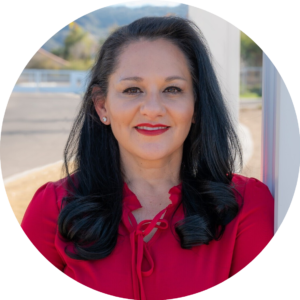This Fall, Arizona Voters Could Turn Their ESA Program Over to the Democrats
The party could win complete control over state government for the first time since 1966. Huge decisions await on school spending and choice.

Get stories like these delivered straight to your inbox. Sign up for The 74 Newsletter
This article is part of The 74’s EDlection 2024 coverage, which takes a look at candidates’ education policies and how they might impact the American education system after the 2024 election.
Arizona already looms as one of the handful of battleground states that will decide the 2024 presidential campaign. But closer to home, and farther down the ballot, its legislative races could upend what has been one of America’s most welcoming environments for school choice.
A pioneer of sorts, the state became the first in the nation to offer education savings accounts, or ESAs, in 2011. A decade later, it was the first to make those programs — which offer parents roughly $7,500 to spend on their children’s educational expenses, including private school tuition — available to any family.
But following a wave of copycat laws that have subsequently brought ESAs to over a dozen states in the last few years, Arizona voters might set another precedent this fall: becoming the first electorate to hand over governance of its system of private school choice to the state’s Democratic Party, led by Gov. Katie Hobbs. Doing so could pose a serious test to ESAs’ political sustainability, but also to their detractors’ powers to stymie them.
Republicans currently hold two-seat majorities in both the Arizona Senate and House of Representatives, a narrow enough edge for Democrats to dream of capturing one or both chambers for the first time in decades. With Hobbs approaching her third year in office, the party would enjoy its only period of unified control of government in Arizona since 1966.
Just two or three seats in each chamber are considered highly competitive, and public polling is rarely conducted in legislative campaigns. The Democratic presidential ticket of Kamala Harris and Tim Walz held a three-point lead in a recent poll, and a statewide vote on abortion access is expected to increase Democratic turnout on Election Day, but it is impossible to guess whether such a surge would move votes in lower-profile races.
What is in little doubt is local Democrats’ opposition to ESAs. In her first state budget framework, submitted last spring, the governor proposed to repeal the statewide expansion enacted the previous year, which extended eligibility for the program even to well-off families already enrolling their children in private schools. But the idea floundered at the statehouse.
Earlier this year, Hobbs came back with a package of much more modest reforms aiming to bring “accountability” to the system by, among other things, requiring private schools receiving ESA money to fingerprint their teachers (as traditional public schools must). That mandate, along with one preventing ESA families from using their accounts over summer vacation, was included in the FY 2025 budget passed in June, but ESA detractors complained that they would do little to stem the growth of private school choice.
Since eligibility was made universal, enrollment figures show that the number of Arizona students receiving ESAs has grown from 12,000 to 75,000.
Paul Bentz, a Republican pollster at Highground Public Affairs Consultants, said that legislation to make ESAs more transparent was “overwhelmingly popular.”
I don't think they can outright eliminate (ESAs) at this point. The genie's out of the bottle for that.
Paul Bentz, Republican pollster
“Democrats could pass more accountability measures tomorrow,” said Bentz. “All the polling demonstrates that voters support requiring schools that receive ESA support to have the same reporting requirements, the same teacher verification and school safety, as public schools.”
Still, he added, the party probably wouldn’t be able to shackle the sector as Hobbs first intended — at least, not without claiming sizable Democratic majorities in November. More likely, Bentz predicted, the party would win one chamber, or perhaps enter into a 50-50 split that would necessitate some form of power-sharing.

“I don’t think they can outright eliminate [ESAs] at this point. The genie’s out of the bottle for that.”
Marisol Garcia, president of the Arizona Education Association and one of the most influential union leaders in the state, held out hope for a more thorough-going victory. With a big enough legislative advantage, she said, Democrats would gain the ability to “slowly dismantle” the ESA program. While adding that state leaders should proceed with care, given the large number of recipients with special needs, Garcia argued that a better-funded public school system could step into the breach.
“It has to happen slowly to honor those students,” Garcia told The 74. “But at the same time, those students should be cared for by the public schools to make sure they’re getting their needs met.”
Financial debate
For Garcia and many other educators, the principal downside to the program is financial.
According to estimates from the Arizona Department of Education, its total cost exceeded $700 million over the last fiscal year. That figure was equivalent to roughly half of the state’s deficit, which was closed in the recently passed budget through a mix of spending cuts.
Accounts differ sharply over the total fiscal impact of private school choice, with opponents pointing to the steeply climbing number of ESA recipients as a major driver of debt; meanwhile, advocates claim that the lower cost of the accounts relative to the annual per-pupil spending on public school students (about $7,500 vs. $10,000) will actually yield savings over time.
Matthew Ladner, a veteran researcher at the Arizona Charter Schools Association and a defender of ESAs, characterized any linkage between the program’s growth and the state’s challenging budgetary projections “completely and utterly false.”

“The Arizona ESA program’s budget is within the budget of the Arizona Department of Education, and last fiscal year, that department put out a press release detailing a $28 million surplus,” Ladner said. He added that it would be “impossible” for the department, run by Republican State Superintendent Tom Horne, “to be running a surplus and to have simultaneously caused a budget deficit.”
Yet many in the local education policy community still lament the state of K-12 finances, which could prove a headache over the next few years in either divided or unified government. Arizona has consistently ranked near the bottom of the United States for school spending, placing at 49th in the country over the last academic year.
That reality resulted partially from steep cuts to school expenditures that were enacted during the Great Recession and never fully reversed. Prolonged dissatisfaction with stagnant teacher pay led to the 2018 #RedforEd school walkouts, which helped awaken a major progressive movement in what had been a reliably red state.
Democrats have benefitted from that organizing energy, winning the state narrowly in the 2020 presidential election and seizing a string of statewide races that culminated with Hobbs’s election in 2022. But without repeating their successes in the legislature, they haven’t been able to slow the growth of school choice or transform education funding. Even a voter-supported ballot measure that would have raised taxes to generate more revenue was later overturned in state court.
Indeed, some dollars that have previously been considered safe may soon be in jeopardy. Proposition 123, an initiative passed in 2016 that grants more than a quarter-billion dollars to school districts each year from the state’s land trust, will sunset next year unless it is reauthorized by voters. While both parties agree that the proposition should be renewed, Hobbs’s own bid to increase the outlay clashed during the legislative session with a GOP counterproposal to direct funds solely to teacher salaries. The deadline to place it before the voters expired, though lawmakers can still call a special election before the money disappears.
Rich Nickel is the president of Education Forward Arizona, a nonprofit group advocating for educational improvement in the state. He also believes that ESAs are likely to stay in place, though he believes more data should be collected to study the effectiveness of schools receiving money through them.
More pressing, Nickel continued, was the need for further resources in school districts struggling to emerge from years of COVID-disrupted learning. But it’s unclear whether that realization has broken through to the state’s leadership. In a comprehensive poll of the public’s views on education policy, the organization discovered “a gap between what voters tell us they want and what they’re getting” out of their elected officials, he said.
There's wide agreement among both parties, all races and ethnicities, that our leaders should be doing more to increase our achievement and attainment rates. But we're not seeing any investments.
Rich Nickel, Education Forward Arizona
“There’s wide agreement among both parties, all races and ethnicities, that our leaders should be doing more to increase our achievement and attainment rates. But we’re not seeing any investments in that in this current budget, and there’s not a lot of optimism that we’re going to see that in the next couple of years.
Get stories like these delivered straight to your inbox. Sign up for The 74 Newsletter

;)


